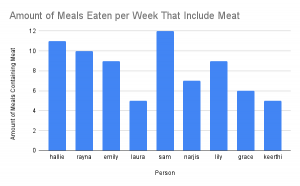I think that global engagement is the most important part of global learning, as it takes actually wanting to make change to see change. As the old adage says, actions speak louder than words. Throughout this class, we have learned of so many ways we can be more sustainable, whether it be being conscious of our water consumption, eating locally, avoiding buying items from certain companies, taking public transportation, etc. But to know is not enough, we need to actually partake in these more sustainable methods. I have been a vegetarian for about 11 years, and while it wasn’t for sustainable reasons then, I love that my choice to not eat meat benefits the environment. Since I already to do so in that manner, I try to go the extra mile to find foods that are more local, organic, and have less packaging so I can further my efforts to make my eating habits more environmentally friendly. I recognize that I am privileged enough to make these decisions. There are steps people can take to cut out meat in a more sustainable and affordable way, for example the program Meatless Monday, where one can choose to not eat meat one day of the week. This is a good way to get communities engaged, involved, and cooperating to make more sustainable choices. 14% of greenhouse gas emissions are attributed to livestock, and a global shift to a vegetarian diet could mean reducing greenhouse gas emissions by 63%. This of course is a big ask, but the implications of simply changing one’s diet are huge.




